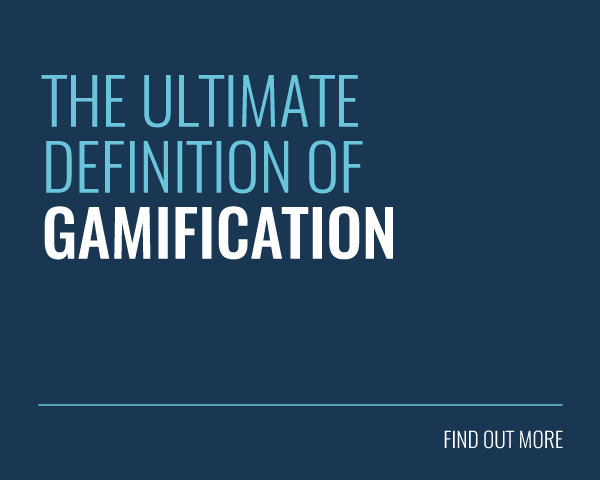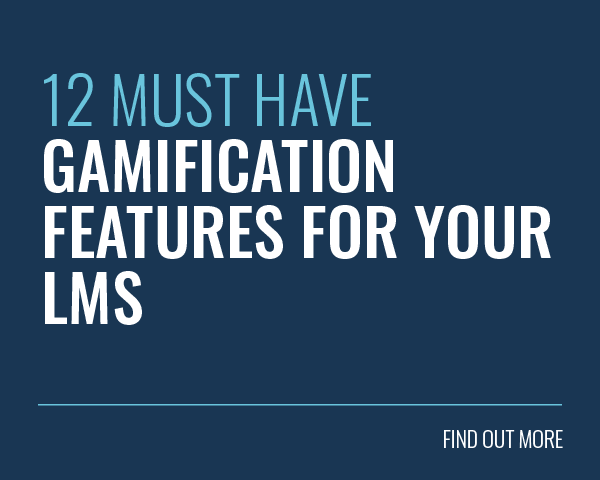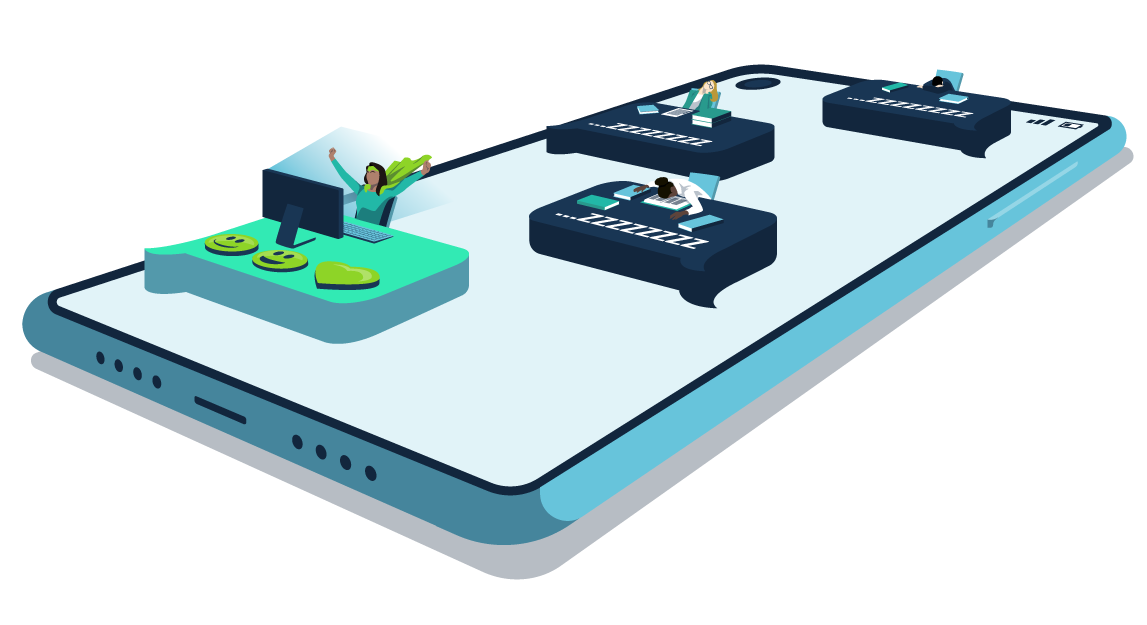 Gamification as an approach in business continues to receive its fair share of objections. These range from gamification being considered superficial or unnecessary, to it being too costly or hard to measure.
Gamification as an approach in business continues to receive its fair share of objections. These range from gamification being considered superficial or unnecessary, to it being too costly or hard to measure.
We understand where all this skepticism is coming from. Such objections stem from common misconceptions regarding gamification. Its top critics belong to two groups. One group are the detached cynics, who are quick to discount its value without fully understanding the concept. The other group consists of dejected professionals or organisations who were unable to find success with their gamification approach. As such, they rashly conclude that gamification in itself is flawed and ineffective.
Gamification in the Workplace
The past two decades have seen gamification grow from being a hip new business trend to being a well-established strategic approach for organisations of different shapes and sizes. In fact, when gamification is applied properly, it can help to transform a dull workplace into a highly engaging one.
This is why gamification has now been adopted by over 70% of the world’s top 2,000 companies. This is a testament to how gamification can be used to drive great business outcomes.
And what about us at Growth Engineering? We live and breathe gamification! By our definition, gamification is the application of gaming mechanics or elements in a non-gaming environment. We have pioneered its use in the L&D industry and continue to garner accolades and awards for it. So with our decades long experience in the field, we come prepared to handle such objections.
If you’re still unsure about gamification, we’re here to give you the real facts. In this article, we will address the top 10 common objections surrounding gamification. Our goal is to help you overcome any misunderstandings regarding this approach. So, if you’re ready, let’s dive in!
Objection 1: Gamification is a Marketing Fad that Will Soon Die Away
This criticism suggests that gamification is a dying artform.
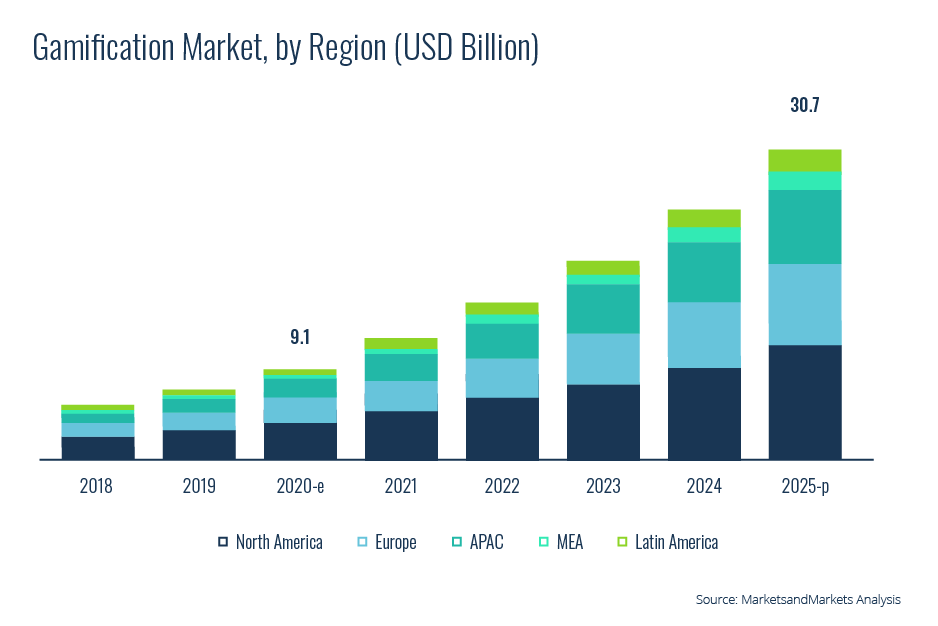 However, the reality is quite different. In fact, the global gamification market is set to grow from $9.1 billion in 2020 to $30.7 billion by 2025, at a compound annual growth rate (CAGR) of 27.4%.
However, the reality is quite different. In fact, the global gamification market is set to grow from $9.1 billion in 2020 to $30.7 billion by 2025, at a compound annual growth rate (CAGR) of 27.4%.
Big companies such as Google, HP and L’Oréal continue to expand their gamification initiatives. Small businesses are also gamifying their recruitment and customer acquisition activities. In fact, 87% of businesses are projected to use gamification in the next five years.
The popularity of gamification will also continue to grow as it evolves in new and exciting ways.
New technologies are integrating with gamification to create even better user experiences. For instance, companies are adding AR, VR and MR capabilities within their gamified online systems. They are using these to create next-level customer service in-store. They are also embedding these into their onboarding or training programmes.
With the flexibility of gamification, it will continue to evolve to fit the changing needs of today’s businesses. We can definitely look forward to its continued influence in the years to come.
Tip: Knowledge is power! Get yourself up to date with the latest research and trends on gamification. To start with, you can check out the 19 Gamification Trends for 2021-2025. If you need further help, then don’t hesitate to consult with one of the engagement engineers here at Growth Engineering!
Objection 2: Gamification Is Distracting and Does not Link to Real-world Goals
 Critics insist that gamifying work activities distracts employees from their actual tasks. Instead of focusing on the job at hand, they spend the time playing games and winning points or badges. Similarly, gamified training programmes reduce the essence of learning to mere gameplay.
Critics insist that gamifying work activities distracts employees from their actual tasks. Instead of focusing on the job at hand, they spend the time playing games and winning points or badges. Similarly, gamified training programmes reduce the essence of learning to mere gameplay.
This is far from the truth. In fact, 90% of workers confirm higher productivity levels when their day-to-day tasks are gamified. Gamified training programmes have also been shown to improve employee engagement by over 60%.
Unlike games, the ultimate outcome of gamification isn’t to create fun experiences. Instead, it uses fun to motivate your users and drive them towards certain behaviours.
Gamification does this by linking to deeper motivations. One of its best qualities is how it can transform boring or tedious tasks into fun, engaging activities. Brain studies show that when we are engaged, the thinking part of our brain (the prefrontal cortex) increases in density.
This area of the brain handles much of our conscious thought and reasoning. As such, gamifying tasks can actually help employees fully engage with the tasks at hand. With increased focus, this can result in less errors and more efficiency.
Fun activities also light up the brain’s reward centers. This creates positive emotions, which motivate us to take specific actions. In the case of L&D programmes, gamification incentivises learners to complete training modules. They are also likely to repeat desired learning behaviours. As such, the use of gamification can form healthy habits!
Tip: Design game mechanics around real world business objectives. In the context of your training programme, a training needs analysis can help with this. You should also consider whether your objectives meet the learning needs of your audience.
Objection 3: Gamification Won’t Work Well with Our Type of Employees or Learners
Here’s another objection we hear all the time. Gamification won’t work with older employees, or those who don’t enjoy playing video games. Others say that this kind of approach will only serve a niche generation or a specific learning audience.
Many studies have debunked this myth. They show how gamification can appeal to different demographics or learner types.
Gamification taps into the same universal motivations that all humans have. We all take delight in fun and pleasurable activities. Playing games is no exception. Yes, others may argue that they dislike video games. But that’s where the misconception happens. Gamification is not simply about playing games. Instead, it channels the art (and science) of gameplay into non-gaming environments through the use of game mechanics.
The right use of specific game elements can trigger the release of feel good brain chemicals such as dopamine and serotonin. Think of these as natural booster shots which lift our moods and help us stay motivated on a task.
As such, the problem to address isn’t whether gamification will appeal to your type of learner. The real question is, how can you plan the right gamification approach to suit your target users?
Tip: Before creating your gamification strategy, you should get to know your audience. What are their motivations? What are their preferred ways of learning? Align your game mechanics with their learning journey. Different game elements can work for different types of learners. It’s all about choosing the right ones!
Objection 4: Gamification Does not Align with Our Company Brand or Culture
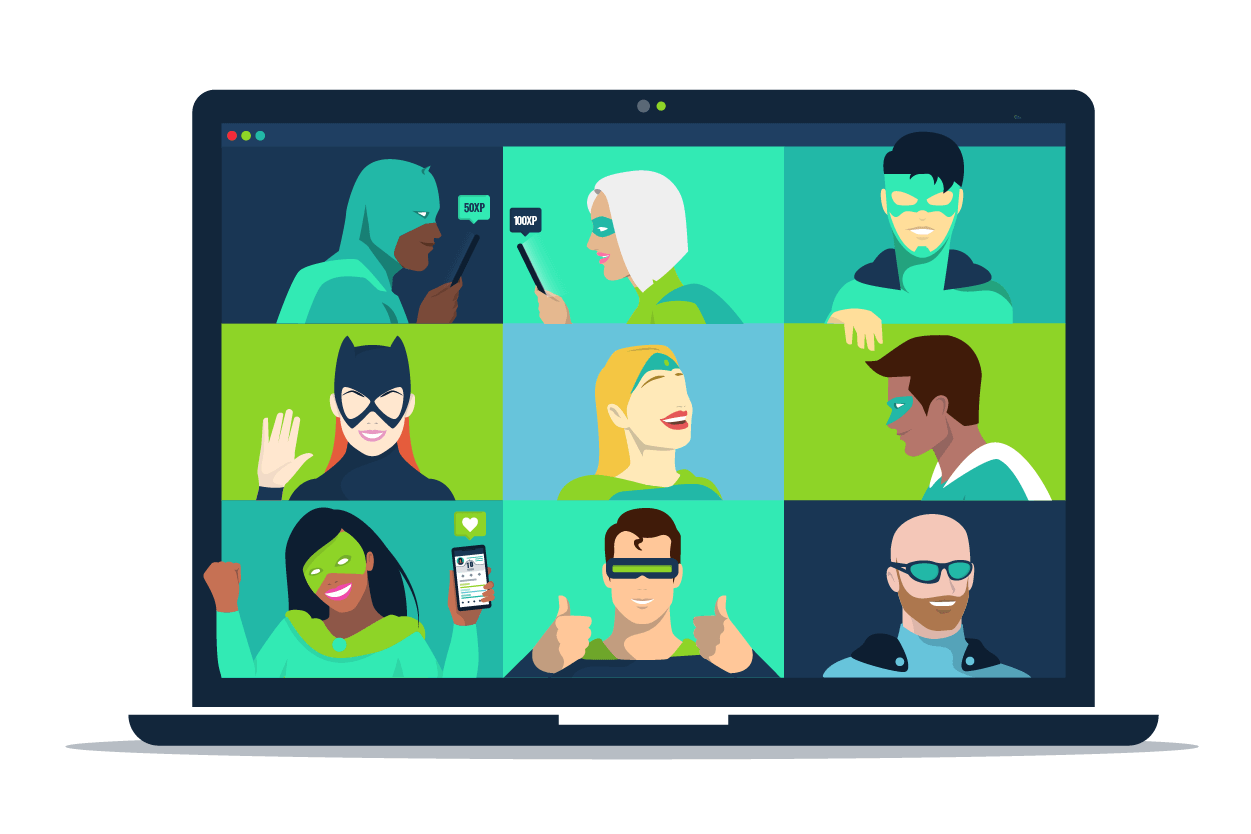 This objection holds that gamification can only work well in a specific sector or context. For example, some insist that it is only suitable within the education field, or in companies with a fun workplace culture. Other companies fear that it would water down the professional or serious feel of their brand.
This objection holds that gamification can only work well in a specific sector or context. For example, some insist that it is only suitable within the education field, or in companies with a fun workplace culture. Other companies fear that it would water down the professional or serious feel of their brand.
While we can indeed associate gamification with fun and games, the approach is much broader than that. Just as there are countless games out there to appeal to different players, there are also many different ways to implement gamification. You don’t have to use cartoony imagery just because you’re using game mechanics. Nor do you have to replicate the exact game mechanics other companies are using.
In fact, gamification will continue to be adopted by organisations across a variety of industries. This not only includes the retail and education sector, but also IT, banking, the public sector and even the military. While the approach may vary, there is one thing that is constant. There will always be room for exciting and effective ways to tailor gamification for your brand or business!
Tip: Before gamifying a process or a programme, consider the unique elements of your company’s brand or culture. From there, you can pick your mechanics and design your approach accordingly. For more tips, you can check out our article on how gamification improves company culture.
Objection 5: Gamification Is a Form of Trickery that Manipulates Human Behaviour
This argument claims that gamification manipulates user behaviour. It tricks employees into doing tasks through deceptive or underhand mechanics.
As addressed in previous objections, we can implement gamification in different ways. While some companies utilise it to promote positive exchanges, others may exploit it at the expense of their employees. However, such exploitation isn’t an intrinsic flaw of gamification. It’s a misuse of the approach.
The Octalysis Framework provides a detailed description of the positive and negative drivers of human motivation. It classifies them as white hat and black hat drivers. Black hat drivers can trigger negative emotions such as rage, frustration or disappointment. But they can also be useful to create urgency. White hat drivers on the other hand create positive feelings such as purpose, mastery or autonomy.
As such, it all boils down to approaching gamification responsibly and with your employees’ best interests in mind.
Tip: Consider your short term and long-term objectives. You can choose to focus on specific game elements that would minimise or eliminate negative learner emotions. One example would be the use of Levels, a game mechanic which indicates a learner’s progress. This effectively taps into a white hat driver which is a learner’s desire for progress and advancement.
Objection 6: Gamification Lacks Originality – it’s just Points, Badges and Leaderboards!
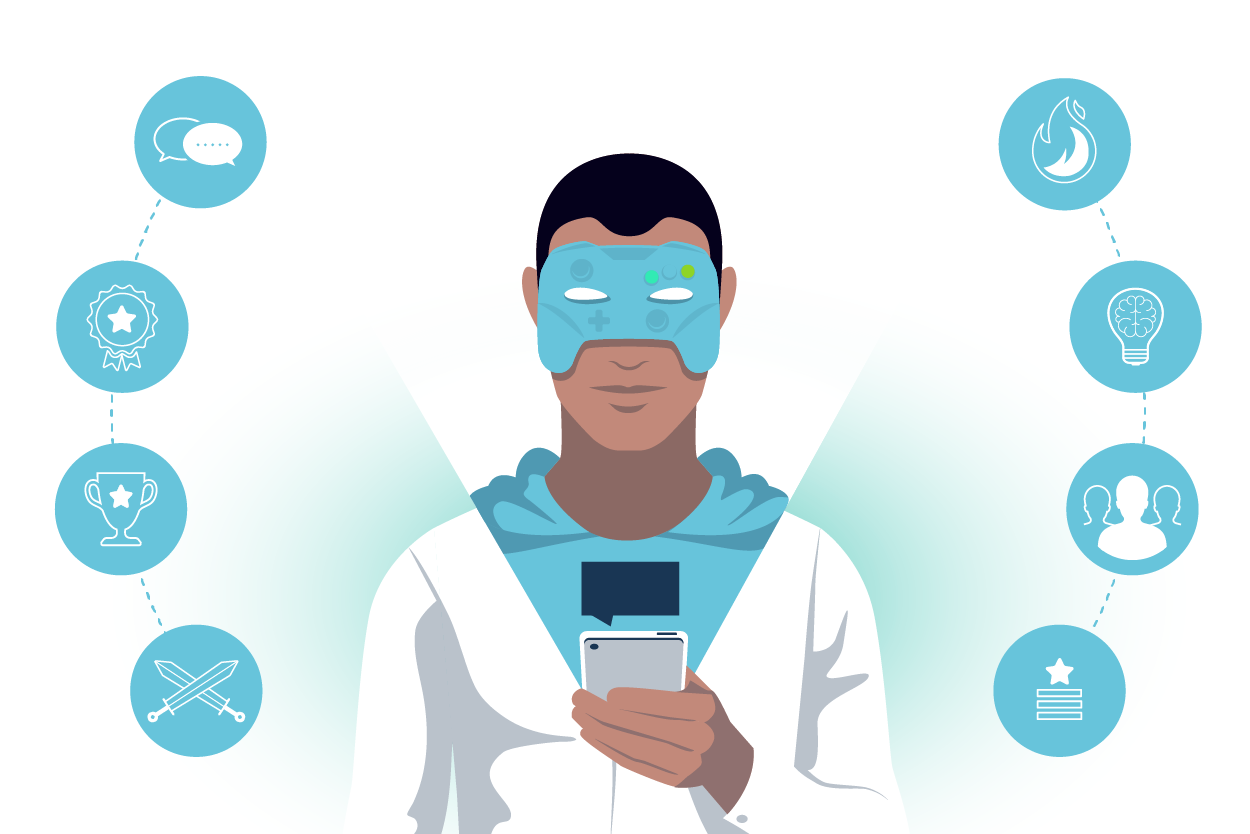 Some critics of gamification would say that it’s a limited one-size-fits-all approach that lacks flexibility. They would note that the standard gamification package always consists of the same, easy and overused game mechanics. This approach lacks novelty and will eventually bore learners into submission and fail to yield any long-term benefits.
Some critics of gamification would say that it’s a limited one-size-fits-all approach that lacks flexibility. They would note that the standard gamification package always consists of the same, easy and overused game mechanics. This approach lacks novelty and will eventually bore learners into submission and fail to yield any long-term benefits.
Gamification in itself should not be blamed, but rather the result of poor gamification design. With countless ways of gamifying an initiative, it can promote originality and innovative approaches in the workplace.
Here at Growth Engineering, our gamified systems offer trademark features that go beyond points and leaderboards. For example, our Streaks feature offers rewards for a set of activities completed during a specific period. This can help reinforce daily engagements within your online gamified platform or mobile app.
The use of Battles is another mechanic that can further excite your users. This enables player-vs-player knowledge quizzes. By combining social learning and gamification, you can create a strongly incentivised training environment.
There are many other game mechanics you can use to drive consistent engagement among your users. The only limit is your imagination. Don’t hesitate to get creative when designing your gamification plan!
Tip: Design your gamified system with a healthy mix of different mechanics, innovation, and good judgement. Take your guide from the best gamified case studies and add your own unique twist to keep employees engaged. When setting up a learning management system, here are more gamified features worth considering!
Objection 7: Gamification Is only a Short-term Concept that Generates Nothing but Superficial Engagement
This objection suggests that a gamified approach cannot produce long-term results. Critics argue that like many games, game mechanics have limited appeal. Over time, users will become less interested in the mechanics designed to drive activity. As this happens, engagement levels will decline and the results will start to dry up.
Oftentimes, this misconception stems from a misguided approach to gamification.
“Got a high employee turnover rate? Need to increase referrals? Address low performance scores? Let’s add more game mechanics!”
Naturally, this approach is bound to fail if companies see gamification as a solution to underlying business problems. Gamification should not mask the symptoms of a broken system. Nor companies implement it without a proper strategy on how it can sustain user interest in the long term.
In fact, research shows that a well-designed gamification strategy can sustain user interest over time. A longitudinal study conducted over the course of three years by Karl Kapp demonstrates this. In the sample, the impact of elements such as leaderboards and rewards continued to have a positive effect on users.
Tip: Don’t gamify a system without getting to the root cause of the problem you’re trying to solve. It also helps to define specific game elements that may help tap into long-term motivations. For example, a Scorecard fuels a learner’s desire for personal growth. It acts as a real-time summary of their progress at any point in time. In turn, this can give your employees the regular feedback they need to keep learning and growing!
Objection 8: Gamification Requires too much Time and Effort to Set Up
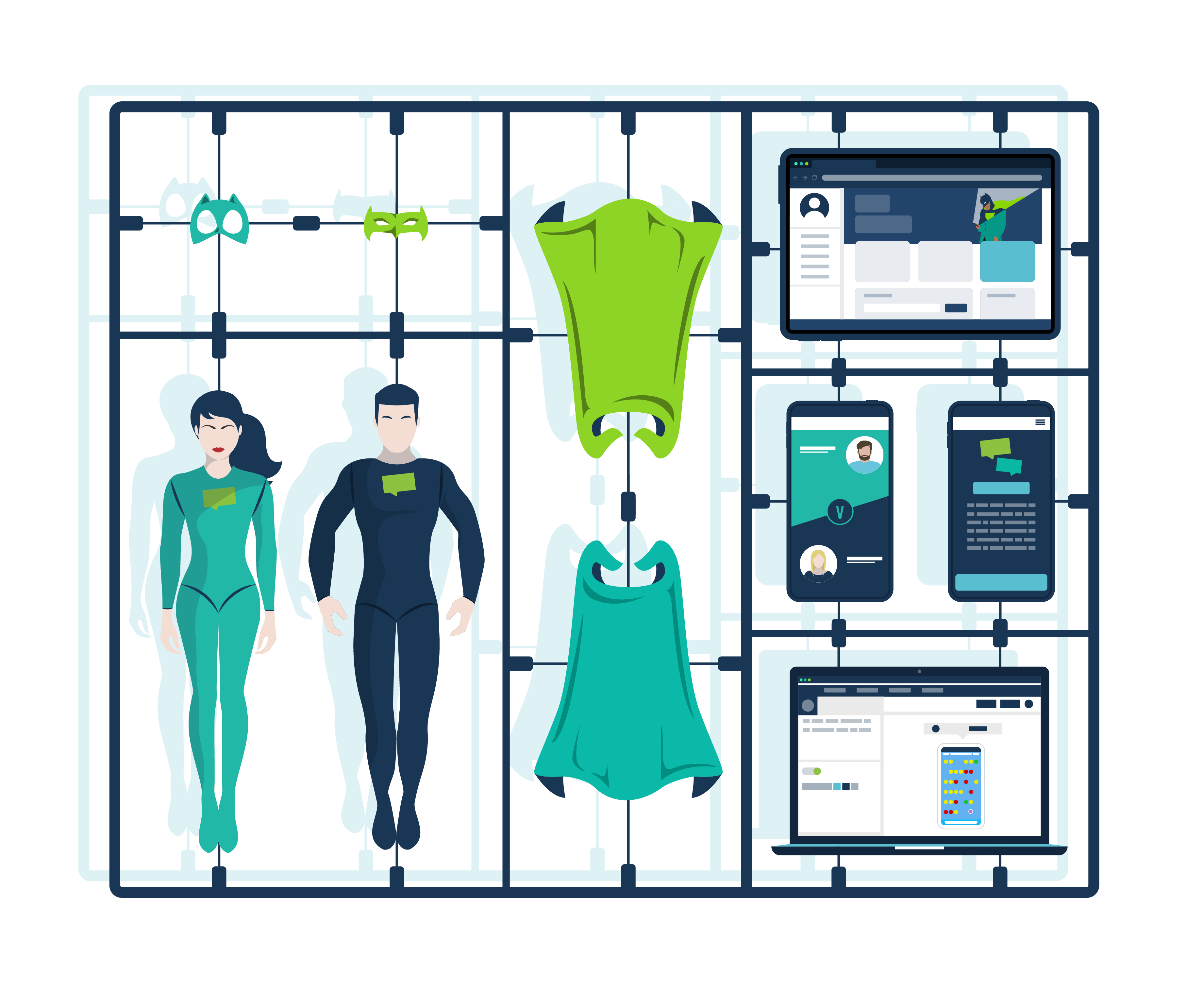 Many organisations claim that they can’t afford the resources or costs associated with setting up a gamified system. Neither can they afford to overhaul an existing business model with a gamified one. Similarly, other businesses get daunted by the complexity of managing a gamified system.
Many organisations claim that they can’t afford the resources or costs associated with setting up a gamified system. Neither can they afford to overhaul an existing business model with a gamified one. Similarly, other businesses get daunted by the complexity of managing a gamified system.
If you are considering gamification for your organisation, you don’t have to support it with sophisticated game mechanics. Likewise, there is no need to power it with the most expensive software.
You could start by implementing gamification within your existing tools or approaches. What’s more, if you’re looking for online solutions (such as a learning management system), be sure to get the right gamified platform to help save up on costs in the long-run.
Here at Growth Engineering, our cost-effective and gamified systems simplify and automate the whole process. For example, Genie, our game-based authoring tool, can help you easily create and integrate custom content to any of our gamified online platforms.
Tip: You do not need to go overboard with your game mechanics. Simple but meaningful game mechanics such as points and badges can be a great addition to your training programme. For more guidance, here are 34 gamification tips to help you get started!
Objection 9: There Is no Proof that Gamification Will Work
This objection claims that there is no proof that gamification actually works. But existing research and case studies prove otherwise. In fact, Texas bank Extraco used a gamified process to raise customer acquisitions by a whopping 700%. Similarly, gamification has been proven to increase productivity by up to 50%.
However, gamification can also go wrong when organisations fail in the planning and implementation stages. In fact, a Gartner report concludes that 80% of gamified applications fail to meet business objectives due to poor design.
To avoid being part of this statistic, here are some questions to consider:
- What is the business goal behind the gamified activity?
- How will you test and measure its success?
- Who are your users?
- What game mechanics should you select to motivate them?
- What potential risks could arise throughout the whole gamification process?
One successful case study comes from GAME, the UK’s leading high-street video games retailer. The company wanted to achieve better results in their training programme. As such, they used Growth Engineering’s The Academy LMS as the framework for their learning platform. They called their system GAME Learning Zone. This is a learning management system packed with game features such as points, levels and leaderboards.
The programme proved to be a great success almost immediately. It quickly engaged GAME’s learner audience and completion rates soon soared to 89%. In turn, this has generated a 94.3% uplift in the average customer basket. Gamification had a large role to play in achieving these incredible results.
Tip: What distinguishes an effective gamification programme from a poor one is its capacity to drive behaviour change. Design your game mechanics with this in mind. The BJ Fogg Behaviour Model is one good framework you can follow to help you achieve optimum outcomes!
Objection 10: Gamification Is Hard to Measure Unlike Traditional Methods of Training
 Critics are often quick to dismiss gamification as being hard to measure. In their heads they may be thinking: “How in the world can one assess business impact using game points, badges and leaderboards?”.
Critics are often quick to dismiss gamification as being hard to measure. In their heads they may be thinking: “How in the world can one assess business impact using game points, badges and leaderboards?”.
As with any other initiative, when you implement a gamification programme, you need to set up clear goals and metrics to help you assess success.
Your gamified approach should have a clearly defined ‘what’, ‘why’ and ‘how’. It should also align with your company’s mission and the needs of your audience.
Another important step is to always be mindful of the needs of your employees throughout the whole process. For example, it helps to conduct qualitative research to assess the interaction and engagement of users. You will also benefit from periodically rolling out new features to sustain novelty and interest.
As such, the essence of measuring gamification is no different to traditional approaches. Like other initiatives, gamification strategies must link to well-defined goals and metrics. They must also be regularly updated to keep up with the evolving needs of your organisation and employees.
Tip: Be selective when choosing the right metrics to assess performance. More metrics means more data to collect and processing requirements to generate. What’s more, be sure to measure the performance of your game mechanics at every point of your learners’ journey. You should cover three key stages: adoption, usage and engagement. Beyond in-game activity, you can also measure ROI by taking note of increases in productivity, cost reductions or increase in sales.
Final Words
In this article, we have debunked ten common objections to gamification. Such misconceptions often stem from hasty assumptions and a misguided view of its use in a business context.
It is also easy to conclude that gamification doesn’t work if it does not meet the desired outcomes.
However, gamification as an approach should not be blamed for poor results. Rather, this is often a natural consequence of misaligned objectives, poor design and faulty implementation. What’s more, gamification should not be a solution to a broken system.
The aim of gamification is to create engagement and drive behaviour change. To achieve this, a well-designed gamification strategy must be put in place.
Programme objectives must be aligned with the needs of your audience. This should be paired with a good UX design and the right set of game mechanics. Having a clear measurement plan will also help you link your game mechanics to wider business goals. This will allow you to make the essential tweaks needed to keep your users engaged.
Gamification, in its essence, is a human-centric approach that should ultimately empower your employees. We encourage you to use gamification as a way to create positive change. Failing to do so may create superficial engagements and short-term outcomes.
As such, you must approach gamification with meaningful and responsible intentions. Only then can you leverage its power to achieve worthwhile and long-term results!
Want to get ahead of the game when it comes to gamification?
Get in touch with our experts to learn how you can design the most effective gamified training programme for your business!



